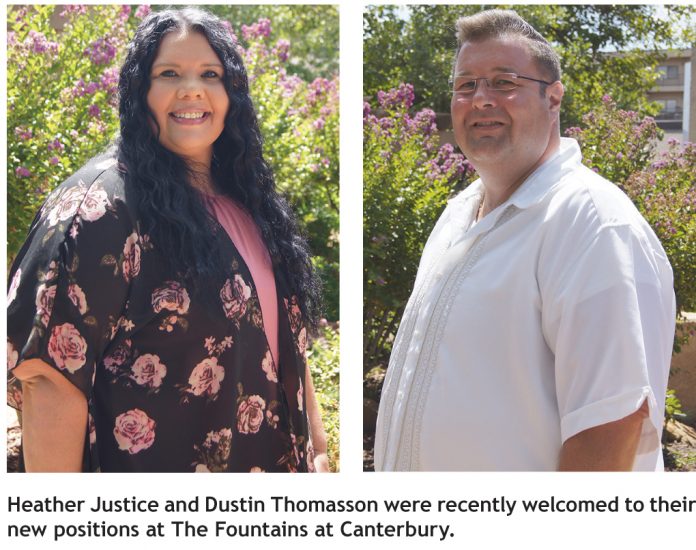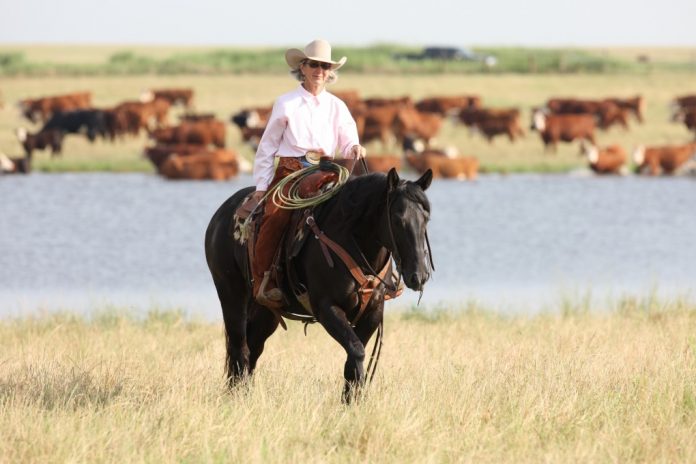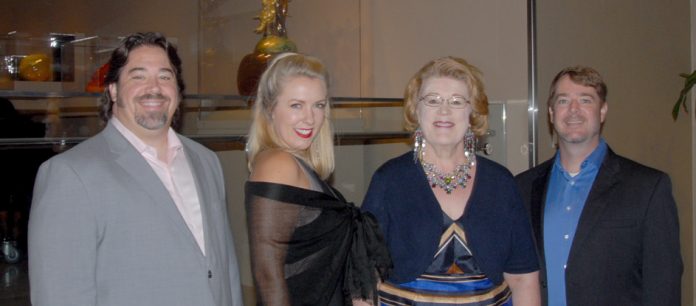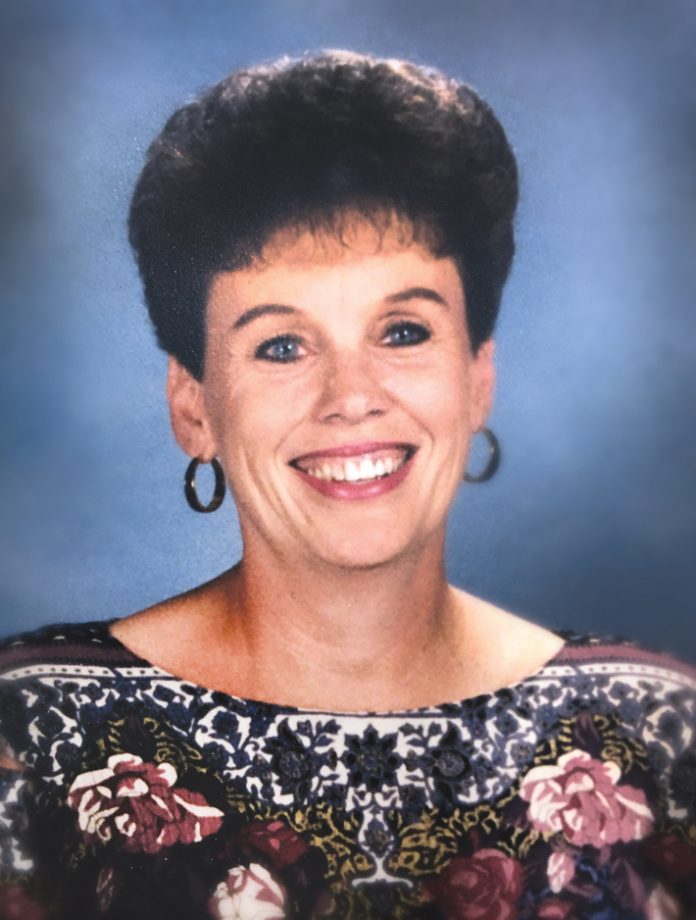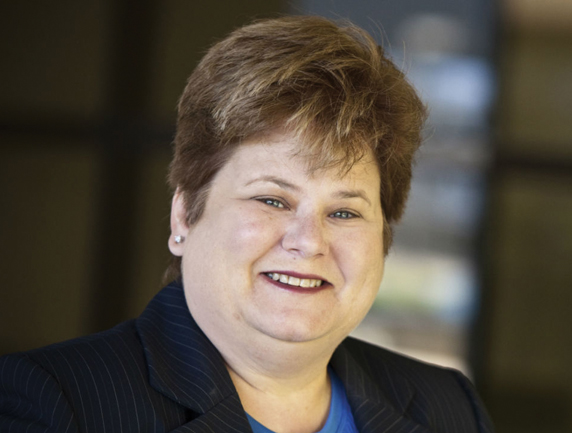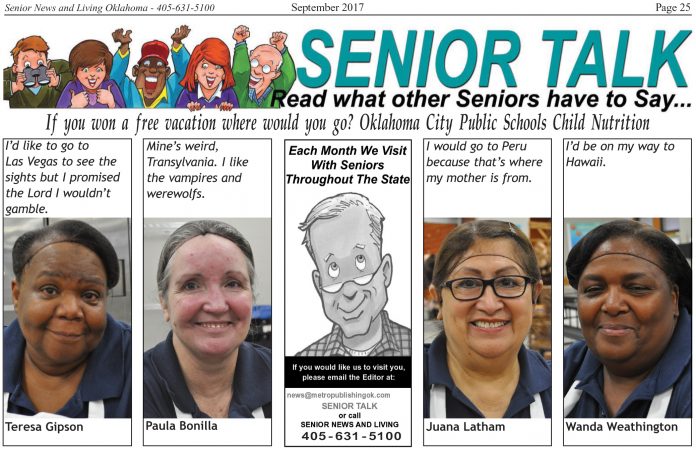he Fountains at Canterbury, a continuum of care senior living community in Oklahoma City, welcomes Dustin Thomasson as the assistant director of nurses in rehabilitation and skilled nursing at The Springs and Heather Justice as the program director for assisted living at The Inn and memory care at The Gardens at The Fountains of Canterbury. Thomasson brings more than 22 years of nursing experience to the position, and Justice adds 16 years of experience to her position.
“The Fountains at Canterbury relies on exceptional associates to provide quality care that allows our residents to thrive,” said Cody Erikson, executive director of The Fountains at Canterbury. “Dustin and Heather bring valuable experience and compassion to these positions. They will be vital to the future of The Fountains of Canterbury.”
Thomasson became a registered nurse in 2002 and has worked for The Fountains at Canterbury for three years in other capacities. He was previously the director of nurses at Meadowlake Estates in Oklahoma City and a clinical director at Brookdale Bradford Village in Edmond, Oklahoma.
“I hope that the work I do each day betters the life of people both living and working in the community,” said Thomasson.
Justice has been a registered nurse since 2011 with experience at Quail Ridge Senior Living in Oklahoma City as the director of nurses and was previously a registered nurse care manager at Providence Home Care in Oklahoma City.
The Fountains at Canterbury is dedicated to being the first choice in senior living, providing a continuum of care including independent living, assisted living, memory care, innovative rehabilitation therapies and skilled care. The Fountains at Canterbury is managed by Watermark Retirement Communities and is committed to creating an extraordinary community where people thrive. To learn more, please call (405) 381-8165 or go online to www.watermarkcommunities.com.
The Fountains at Canterbury Welcomes Two New Associates to Team
Savvy Senior: Top New Cars for Older Drivers
Dear Savvy Senior, My wife and I are both in our late sixties and are looking to buy a new car. Can you recommend some good resources that can help us evaluate and choose a good car for older drivers? Car Shoppers
Dear Shoppers,
With more than 40 million licensed drivers in the United States age 65 and older, many automakers today are designing certain vehicles that are friendlier for older drivers. But what makes a good car for seniors? For many, top priorities include a vehicle that’s easy to get into and out of, easy to adjust for fit and comfort, easy to operate and see out of, as well as reliable, safe and a good value.
To help you narrow your vehicle choices, Consumer Reports and the American Automobile Association (AAA) offer some great information and tools to assist you.
CR Best Cars
Consumer Reports recently put out a top 25 ranking of new cars for senior drivers. Each vehicle on their list offers excellent or very good ratings on reliability, safety, road-test performance and owner satisfaction. And, they offer a variety of senior-friendly features that are extremely important to older divers, like:
* Easy front-seat access: Vehicles with low door thresholds, wider door openings, and step-in heights that reduce the need for ducking or climbing, make getting into and out of a car easier for those with physical limitations.
* Good visibility: Being able to see well out of the front, sides, and back of a vehicle for tall, medium, and shorter drivers.
* Simplified controls: Easy-to-read gauges and simplified/intuitive controls for changing the radio, shifting gears, and adjusting the heating and cooling is a high priority among older drivers.
* Bright headlights: Powerful headlights can make driving at night easier for people with decreasing or compromised vision.
They also weighed in extra safety features (standard or optional) like a backup camera, automatic emergency braking, forward-collision warning and blind-spot warning.
Their picks include a variety of compact and midsized sedans and SUVs, two minivans and a station wagon from seven different automakers. Here’s their top 25 ranking, starting with one through 25: Subaru Forester; Subaru Outback; Kia Soul; Subaru Legacy; Kia Sportage; Toyota Highlander; Toyota Prius V; Toyota RAV4; Honda Odyssey; Nissan Rogue; Honda Accord; Ford C-Max Hybrid; Hyundai Sonata; Toyota Camry; Subaru Crosstrek; Toyota Sienna; Honda CR-V; Honda Pilot; Kia Forte; Ford Escape; Toyota Corolla; Kia Sorento; Ford Flex; Hyundai Santa Fe; Hyundai Tucson.
For more information on their top 25 list, see ConsumerReports.org/elderly-driving/top-25-new-cars-for-senior-drivers.
AAA Tool
Another great resource that can help you evaluate and chose a vehicle that meets your needs is the AAA online tool “Smart Features for Older Drivers.”
At SeniorDriving.AAA.com/SmartFeatures you can check the areas you have problems with – like diminished vision, cognitive decline, limited upper body range of motion, decreased leg strength, arthritic hands, short stature or overweight – and the tool will identify vehicles that have the features that will best accommodate your needs. Although this tool looks at model-year 2016 vehicles, in many cases the features shown are carried over for 2017 models.
They also have a Smart Features brochure you can download that will tell you what to look for in a vehicle to best accommodate your needs.
Send your senior questions to: Savvy Senior, P.O. Box 5443, Norman, OK 73070, or visit SavvySenior.org. Jim Miller is a contributor to the NBC Today show and author of “The Savvy Senior” book.
SPECIAL TO SN&L: Feeling short of breath? It could be something serious.
September is Global Pulmonary Fibrosis Awareness Month. While most Americans don’t have first hand knowledge of pulmonary fibrosis, the 140,000 Americans who are reported to have it according to the American Lung Association are well aware of the impact it makes on their lives as well as their family.
Pulmonary Fibrosis is one of a family of related diseases called interstitial lung diseases that normally results in lung scarring. As the lung tissue becomes scarred, it interferes with a person’s ability to breathe and deliver oxygen into the blood. One of the most common types of Pulmonary Fibrosis is Idiopathic Pulmonary Fibrosis (IPF – Idiopathic means no known cause). Currently, there is no cure for the disease and no way to reverse lung scarring and damage, so for most, the only hope is a lung transplant.
IPF is commonly misdiagnosed. An accurate diagnosis may be delayed for months or even years because the symptoms of IPF are shared by many other and more common lung diseases, such as COPD, asthma or even cardiac issues. IPF is normally characterized and noticed by a persistent cough and shortness of breath. As the lungs develop more scar tissue, symptoms worsen and patients may become breathless while taking part in everyday activities, such as showering, getting dressed, speaking on the phone, or even eating.
Other common symptoms of IPF include: Fatigue and weakness, Discomfort in the chest, Loss of appetite, Unexplained weight loss, Clubbing’ of fingertips.
Diagnosis is normally confirmed through Pulmonary Function Tests, combined with a High-Resolution Computed Tomography (HRCT) scan of the chest and other pulmonary tests.
To manage symptoms and slow the process, the Food and Drug Administration approved the drugs, nintedanib – brand name Ofev – and pirfenidone – brand name Esbriet – in October 2014. But they are extremely expensive and cost-prohibitive for some. Even with the medications that are designed to slow the process, presently there is no way to reverse lung scarring and damage.
To support this rare disease, the Pulmonary Fibrosis Foundation has created a wealth of information for patients, caregivers and friends to increase their knowledge, and be better prepared to partner with their Pulmonologist and other doctors. Its mission is to serve as the trusted resource for the pulmonary fibrosis community by raising awareness, providing disease education and funding research.
Support is There……..
Participating in a support group may improve your emotional well-being and have a positive impact on your health by offering you an opportunity to connect with others who are facing similar experiences, obtain practical information, and to receive support. Support groups can also be a valuable resource for your caregivers, other family members, and friends. The Oklahoma City area Pulmonary Fibrosis Support Group meets the first Tuesday of every month from 6:30pm – 8:00pm at Integris Baptist Medical Center, 3300 NW Expressway, Conference Rooms J, K, and L, Oklahoma City, OK. There is no charge to attend.
To learn more about IPF, and the available resources for the pulmonary fibrosis community, visit the Pulmonary Fibrosis Foundation website at www.pulmonaryfibrosis.org
Significant Women in Agriculture Highlight: Terry Stuart Forst
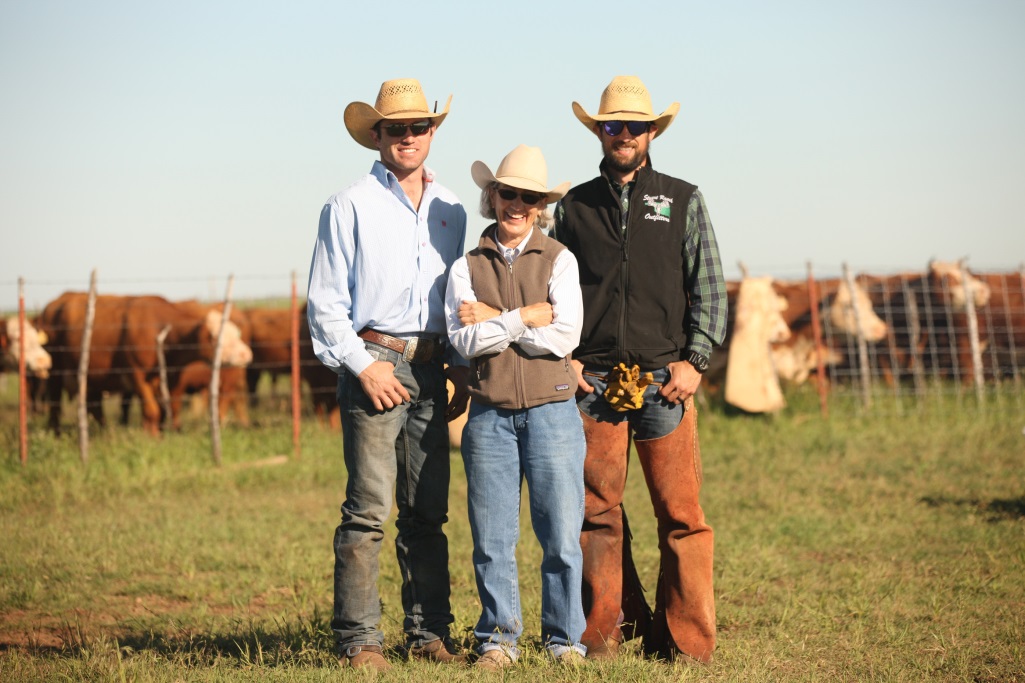
All 99 degrees of the July sun beat down on the parking lot outside the Stuart Ranch Headquarters in Waurika, OK. Inside, the walls of the log cabin-style building are lined with awards and family photos, most of which include horses and cattle. The sound of boots on a concrete floor echo down the hallway as Terry Stuart Forst rounds the corner and greets a visitor with a smile and a handshake.
Forst is the General Manager of the 46,000 acre operation, a title she’s held since 1992 when her father handed her the reins.
She pulls out a bench and sits at a long dining table as she reflects on memories and stories of the ranch.
Forst has had agriculture in her blood from day one. Some of her earliest memories as a child include going with her siblings to play at “Big Daddy’s Playhouse”, which was the scale house her grandfather used to weigh cattle.
“When I was growing up, if I was on a horse, I was happy,” Forst said.
Upon graduating high school in Oklahoma City, Forst went on to attend Oklahoma State University which she credits with giving her some of the best friendships in her life. There she received her bachelor’s degree and returned home to the ranch. However, before she took the position of General Manager, she tried her hand in a few other roles across the region.
“I got my real estate license and lived in Dallas for a while,” Forst said. “I felt like a duck out of water and really was not happy.”
Forst decided to apply for Texas Christian University’s Farm and Ranch Management Program on a whim. She received a phone call the next day for an interview.
“When things just start falling into place perfectly, you know it’s God’s plan,” Forst said.
Shortly thereafter she got her son Clay enrolled in a local school and her youngest son, Robert, into a day care close by. When everything began to fall into place, Forst knew she was headed in the right direction. After graduating first in her class from the Farm and Ranch Management Program in 1992, she and her sons returned home to the ranch for good.
“We will be 150 years old next year,” Forst said explaining the history of Stuart Ranch. “I am the fifth generation, my son’s Robert and Clay are the sixth, and my grandchildren are the seventh.”
The Chisholm Trail Museum in Duncan, OK comes up in conversation between Forst and her visitor.
“Do you want to see it?” Forst asked.
“The museum?” the visitor asked.
“No the actual Chisholm Trail,” Forst said. “It runs right through our land. I’ll take you to see it!”
She climbs into her white Ford Expedition, looking over her grandkids’ car seat as she backs out of the drive. Dixie, a brown and white Welsh Corgi and Forst’s chief traveling buddy, takes a back seat for the ride.
A white cloud of dust trails the car as Forst drives down Jefferson County roads reminiscing on the history of the ranch – a subject that Forst is a scholar on.
The ranch, which was founded in Caddo, OK in 1868, is the oldest in the state of Oklahoma under continuous family ownership. To help the reader grasp the age of the operation, it was founded a few months before Ulysses S. Grant was elected President, five years before barbed wire had been designed and half a century before World War I broke out.
“Caddo is the oldest part of the ranch,” Forst said. “Daddy bought this place [Waurika] in 1993. When he died in 2001, we started realigning to make this our headquarters. It just made more sense and we’ve been here since 2004. It’s a very new move relative to our operation.”
The operation of 46,000 acres has now expanded into an area just east of Waurika, OK where their headquarters is located today. The ranch is separated into three categories: horse, cattle and outfitting divisions. Much to Forst’s delight, her two sons followed her footsteps and made the choice to live and work on the ranch.
The horse division is managed by Forst’s younger son, Robert, and has a history and tradition as deep as the ranch itself. The horse operation has had worldwide success over the past century taking home several world champion titles. Stuart Ranch received the American Quarter Horse Association’s Best of Remuda award in 1995 for their quality of working horses.
“We bred a little under 50 mares this year,” Forst said. “We do all of that in-house with artificial insemination.”
This is just one of many ways Stuart Ranch has diversified and adapted to ensure their success and growth.
The cattle division is comprised of 60 percent Black Baldies and 40 percent Herefords. Cows calve in one of two 60-day calving periods; February through March and September through October. Forst oversees the cattle operation and has four “camp men” that reside on the ranch to ensure things are taken care of properly.
The hunting division, Stuart Ranch Outfitters, is an Oklahoma Agritourism destination managed by Forst’s oldest son, Clay. The outfitting operation offers package hunts at both Caddo and Waurika locations. Hunters have an opportunity to hunt whitetail deer, turkey, waterfowl and feral hogs on 46,000 acres ranging from tallgrass prairies to rolling rocky hills.
Between the three divisions of the Stuart Ranch, no one would argue that Forst has a full plate when it comes to work. With 150 years under their belt, you can bet that Stuart Ranch has weathered a few storms and fought their fair share of uphill battles as well.
Forst has a way of dealing with those difficult times in life.
“I told my boys at a young age that sometimes all we can do is put one foot in front of the other, pray and keep trucking,” Forst said.
Forst goes on to talk about her love for the agriculture community. While that community encompasses thousands of families, she has never hesitated to help her neighbors – even if they’re 300 miles away.
When wildfires struck farms and ranches in northwest Oklahoma and southwest Kansas this March, Forst hurt with them. She rounded up 11 volunteers, 11 miles of fence, skid steers, trucks and countless tools and headed north.
“You’ve gotta help when you’ve gotta help,” Forst said. “The neat thing to me was seeing thousands of trucks loaded with hay and then you see one old man with a stock-rack pick up hauling two bales. Everyone just gave all they could. I can hardly talk about it.”
Forst has also received many awards and held positions that one simply does not attain without a strong work ethic and impeccable leadership skills. She served as the first female President of the Oklahoma Cattlemen’s Association and was inducted into the National Cowgirl Hall of Fame in 2007, just to name a few.
Although, if you want to hear about Forst’s accomplishments, don’t go to her. Her humble attitude can make obtaining information about herself a challenge. She will, however, brag on and on about those who have helped her along the way and shaped her into who she is today.
“I have been very blessed to have some really, really, really great friends,” Forst said. “The list goes on and on.”
May 19,, 2018 is set to be the ranch’s 150th anniversary celebration. Some may wonder how the ranch not only stayed above water, but thrived through 150 years of trials and hardships. Forst is quick to attribute the ranch’s success to God’s grace and, as long as Terry Forst has anything to do with it, the ranch will be around many generations to come.
“It’s interesting what God will do and how he’s orchestrated things in my life,” Forst said. “My whole life has been faith, totally and completely. I tell Him ‘I’m not quitting, so don’t quit on me, Lord!’”
TRAVEL/ ENTERTAINMENT: Opera in Oklahoma is a bit more colorful with Painted Sky Opera Company
Photography and Text by Terry “Travels with Terry” Zinn t4z@aol.com
Oklahoma’s own senior, Dr. Barbara DeMaio, has returned to Oklahoma City after a successful singing career in Europe. As current Assistant Professor of Voice at the University of Central Oklahoma, she has expanded her opera influence to being the Executive Director of the year old Painted Sky Opera company. The company recently secured residency at the Freede Theater at Oklahoma City’s downtown Civic Center Music Hall.
It seems appropriate for DeMaio to return to her opera roots in Oklahoma City where she earned her Bachelor’s Degree from Oklahoma City University School of Music.
“I grew up here, went to Northwest Classen high school,” says Demaio, “and I still have many, many friends here. I go to breakfast every Friday morning with my best friend from high school and my best friend from college. Their children call me “Aunt Barbara.” I love this state and this city. Although Italy will always be my second home, and I miss it every day, this is where I want to live and teach, and UCO is my dream job.”
DeMaio recalls, “The Painted Sky Opera originated in a casual conversation between co-founder Rob Glaubitz and me. We found it strange that Oklahoma City didn’t have its own professional opera company considering the popularity of opera in other regional cities and the diversity of the OKC artistic scene. We founded the company in 2015 along with co-founder Mikayah Fox.”
The Painted Sky Opera Board of Directors was formed in September 2015 with Joel Burcham as the founding president of the board.
Painted Sky Opera’s Mission is stated as “presenting innovative, inspiring opera through performance and education, featuring emerging professional artists in Central Oklahoma.”
“Our biggest challenge is to introduce opera to those who don’t know it and don’t realize how wonderful it is yet,” says DeMaio. “If we can get someone in the theatre, we are convinced that they will fall in love with this magnificent art form. The first opera I attended was at the Civic Center, many years ago; and it was Tosca. I’ve sung the role many times, and now I am thrilled that we are producing the opera and giving others the opportunity to sing this incredible music”.
The company’s first year season consisted of, La Canterina by Joseph Haydn, produced at the OKCMOA Samuel Roberts Noble Theater, then in June 2016 in collaboration with the Oklahoma Haydn Festival. It was followed by a double bill of Chabrier’s An Incomplete Education and Menotti’s The Medium in September 2016, which included a new libretto of the Chabrier comic opera written by Rob Glaubitz. Our first season ended with Verdi’s La Traviata in February 2017.
In this year’ s production of Tosca in the photo above, is Nicole Van Every, as one of the Toscas, Joel Burcham, who is one of the Cavaradossis, and Kevin Eckard, who is Sacristan.
The new season includes: Tosca, opera by Giacomo Puccini, on Oct. 6, 7 at 8pm and 8 at 2pm, in the Freede Little Theatre; Souvenir, play by Stephen Temperley about Florence Foster Jenkins Feb. 22-24, March 1-3, in the CitySpace theatre and concluding with Three Decembers, opera by Jake Heggie based on a play by Terrence McNally (Oklahoma Premiere) May 11 and 12 at 8pm, May 13 at 2pm, in the Freede Little Theatre
Tickets are on sale now, at the Civic Center Box Office. Season tickets are: $80 – one season ticket with reserved seating at all three of Painted Sky Opera’s shows – a savings of 20% off of full ticket prices; and $90 – season ticket with Gold Circle seating in the first six rows of Freede Little Theatre for Tosca and Three Decembers
Tickets available at the box office and online:
https://www.paintedskyopera.org
“In addition to productions, Painted Sky Opera has also made a commitment to education and outreach,” says DeMaio. “In Painted Sky Opera’s first year, we connected with more than 700 students at in-school outreach events. We also sang for retirement and hospital communities in Oklahoma City and even connected with opera lovers in Lawton. “
DeMaio’s repertoire includes all the great roles of a Puccini and Verdi soprano, performed in theatres in Italy, Swizerland, Germany and France; Tosca, Lady Macbeth, Turandot, Aida, Abigaille in Nabucco, and also Amelia in Ballo in Maschera, Elvira in Ernani, Lucrezia in I Due Foscari, Leonora in La Forza del Destino and Odabella in La Scala’s Attila directed by Riccardo Muti. She is also a noted interpreter of Norma, the Bellini heroine. Since returning to the United States she has added new shows to her repertoire; Bolcom’s Medea and Hoiby’s Bon Appetit! as well as the Witch in Humperdinck’s Hansel and Gretel , Domina in Forum and Costanza in the play Enchanted April.
DeMaio is currently an Asst. Prof. of Voice at the University of Central Oklahoma, teaching both Opera and Musical Theatre styles, Executive Director of the American Singers’ Opera Project, Executive Director of Painted Sky Opera and a Level III Somatic Voicework© teacher. In October, 2016, she was honored to be named as a Member Laureate by Sigma Alpha Iota. Her DMA Vocal pedagogy degree at Shenandoah University included dissertation research on the effect of menopause on the elite singing voice that she has since presented in the form of workshops and presentations across the US, and also in October, 2017, at La Voce Artistica in Ravenna, Italy.
Mr. Terry Zinn – Travel Editor
Past President: International Food Wine and Travel Writers Association
http://realtraveladventures.com/author/zinn/
www.okveterannews.com – www.martinitravels.com
Cancers Survivor’s Workshop to be held Saturday, Sept. 16
The Stephenson Cancer Center will hold a Gynecologic Cancers Survivor’s Workshop on Saturday, Sept. 16 from 8 am to 4 pm in Oklahoma City.
The all-day workshop is designed to provide patients, survivors, and caregivers with the basics of gynecologic cancers as well as in-depth information on targeted therapies and treatments. Additional topics include: genetic and tumor testing, vaccinations and preventions, and supportive care topics including lymphedema, sexual health, and physical therapy.
The workshop is open to gynecologic cancers patients, survivors, and caregivers. Regardless of when or where treatment was received, all are welcome to attend. There is no cost to attend, and breakfast and lunch will be provided.
The Gynecologic Cancer Survivor’s Workshop will take place at the Samis Education Center at The Children’s Hospital, located at 1200 Children’s Ave., Oklahoma City, OK 73104. To RSVP for the workshop, please visit stephensoncancercenter.org/gynoncworkshop or call (405) 271-1253. According to the American Cancer Society, about 22,440 women will receive an ovarian cancer diagnosis and about 12,820 women will receive a cervical cancer diagnosis in 2017. Ovarian and cervical cancers represent the majority of all gynecologic cancer diagnoses.
Officials Selected for Induction into the Ok Hall of Fame for City and Town Officials
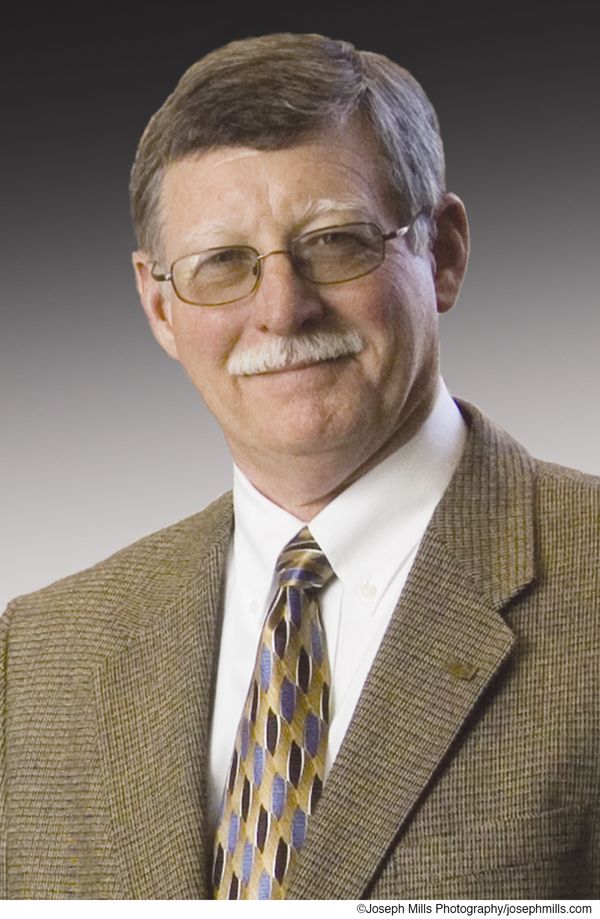
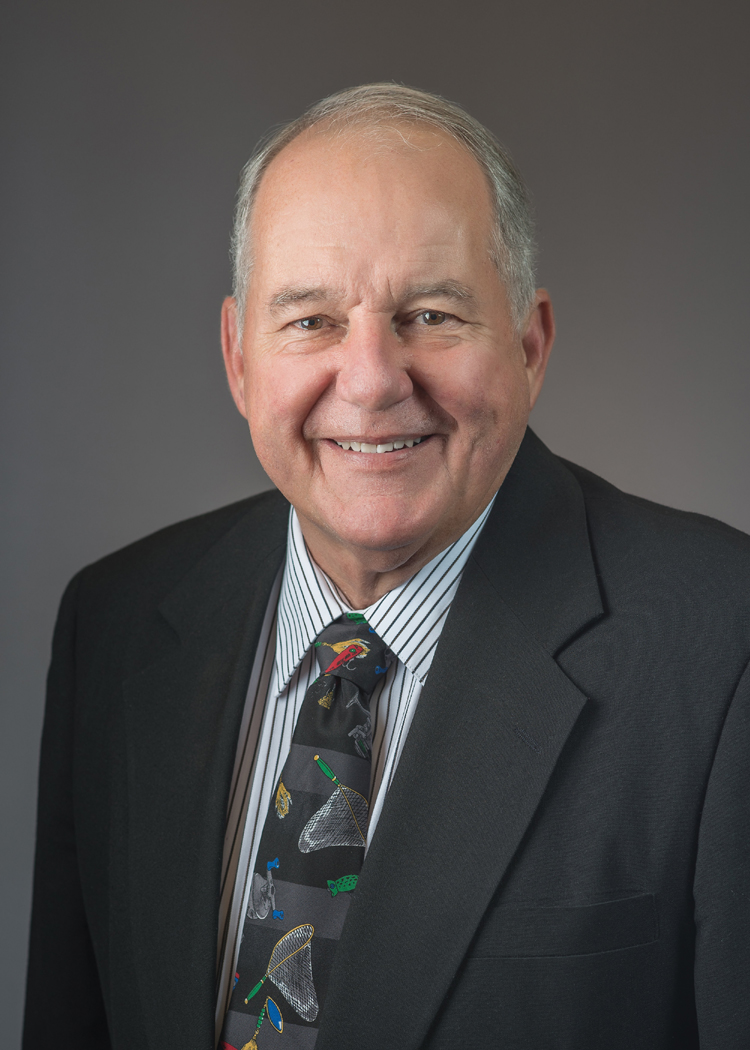

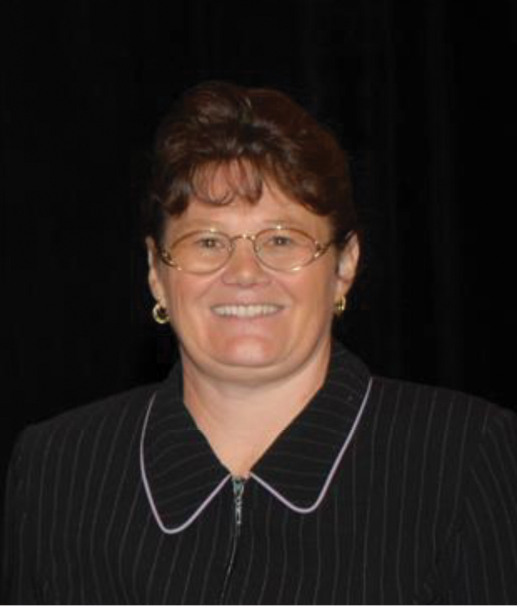
Five officials representing a wide range of experiences will be inducted September 14 into the Oklahoma Hall of Fame for City and Town Officials. The black-tie optional hall of fame induction ceremony will be at the Tulsa Convention Center in Tulsa in conjunction with the Annual Conference Banquet for the Oklahoma Municipal League.
They will become the 56th – 60th inductees into the Oklahoma Hall of Fame since 2001.
Those to be inducted this year were recently announced by the Oklahoma Hall of Fame for City and Town Officials Foundation, which is supported by eight organizations of Oklahoma municipal government officials or service organizations.
Those to be inducted on September 14 are:
Marilyn Kay Andrews, Former Mayor (deceased), Ponca City
Elaine Grace Carr, Mayor, West Siloam Springs
Mick Cornett, Mayor, Oklahoma City
Michael R. “Mike” Nunneley, Town Administrator, Mannford
Drake Rice, Former City Manager, Cushing (Asst.), Prague & Blackwell.
Formed in 1999, the Oklahoma Hall of Fame for City and Town Officials Foundation recognizes individuals for outstanding achievements or contributions to city and town government. To be selected, an honoree must make significant contributions to Oklahoma local government, through their positive spirit of public service, with unquestioned ethics.
The website:
www.okcityandtownofficials.org highlights the careers of each inductee in the past 15 years. Visitors to the website are able to navigate through biographies, video and photo features about each inductee.
The Oklahoma Hall of Fame Foundation is supported by the Oklahoma Municipal League, The Mayors Council of Oklahoma, the City Management Association of Oklahoma, the Municipal Electric Systems of Oklahoma, the Oklahoma Municipal Assurance Group, the Oklahoma Municipal Retirement Fund, the Oklahoma Municipal Power Authority and the Oklahoma Municipal Clerks, Treasurers and Finance Officials Association.
Tickets for the Hall of Fame Induction Ceremony and banquet are $45 each available from the Oklahoma Municipal League by calling 405-528-7515 or by email to cathy@oml.org .
Mercy Announces New Leader in El Reno
Beginning in September, Mercy will have a familiar leader at the helm in El Reno.
Cindy Carmichael will return to Mercy Hospital El Reno for a second time as administrator. She served as interim administrator in 2009 prior to becoming chief operating officer in her current role at Mercy Hospital Ardmore. “Cindy has a love for El Reno, and El Reno has a love for her,” Mayor Matt White said. “We’re excited for her to be part of our continued success.”
In addition to her new position, Carmichael will provide support and oversight to Mercy administrators in Kingfisher, Guthrie and Watonga as regional administrator.
Carmichael has been with Mercy for more than a decade and has spent a large portion of her career dedicated to the development of rural health care. While in Ardmore, she helped forge a deeper relationship with Oklahoma Heart Hospital, which provides cardiac care for patients in southern Oklahoma. Carmichael also was instrumental in the construction and opening of a new Mercy clinic in Ardmore.
“Cindy has spent her career helping provide quality health care to towns across Oklahoma,” said Jim Gebhart, regional strategy officer for Mercy and president of Mercy Hospital Oklahoma City. “She brings an awareness of rural health care that gives us great confidence with her in this role.”
Doug Danker, El Reno’s former hospital administrator, will continue his service with Mercy as director of emergency medical services, where he will focus on growing Mercy’s ambulance service across the northern half of Oklahoma. Danker began his career with Mercy, formerly Parkview Hospital, in 1989 as a paramedic. He later served as supervisor of medical surgery and as director of nursing before being appointed administrator in 2012.
“It’s a double win for El Reno,” White said. “Mercy has given us a fabulous team with Doug and Cindy, and I’m excited to see what they’ve laid out for the community.”
Retiring nurse graduates
by Bobby Anderson, Staff Writer
After nearly 33 years in nursing, Stephanie Waller Wojczynski, RN, went to the Northwest Classen senior prom this spring before graduating in May.
She wasn’t earning a diploma or degree, those had already come in bunches over the last few decades.
Waller Wojczynski’s commencement was the beginning of her retirement after 18 years of school nursing.
“So far I’m really enjoying it,” she said of her retirement. “I’ve had a lot of time to do things I haven’t been able to. One big thing is my mom moved in with us. She needed extra care and it’s given me time to take care of her so it’s a win-win situation.”
She became an LPN in 1984 and then transitioned to RN in 1989. She earned her BSN in 2000.
“I kind of went the long and winding road,” she laughed. “From the time I was a little kid I always wanted to be a nurse. My mom still has a picture I drew when I was five years old in kindergarten of what I wanted to be.”
School nursing came into her life at the right time.
She originally entered Oklahoma City Public Schools in 2000 when her husband was ill and unable to watch the kids.
The school nursing hours allowed her to be free when her kids were out of school.
“After I had been doing it for a few years and he passed I remarried and found I really, really liked it because it’s a lot more challenging than anybody would guess. It’s amazingly challenging,” she said. “Essentially, for a lot of these kids, we are their only health care provider. A lot are uninsured … and with the Affordable Care Act the working poor can hardly afford that. “And we have those who might not be in the country legally and that’s not my job to figure out. My job is to take care of the kids.”
The kids were always the reason she showed up every day.
From the funny to the tragic, school nursing ran the gamut for Waller Wojczynski.
Her first year as a school nurse brought her into the courtroom. A middle school girl came into her office one day and told her that her mother was selling her to older men for drug money.
She immediately notified the police. A few months later she was summoned to court after the biological father sued for custody.
“That was stressful,” she said.
During flu seasons, she could see upwards of 40 children a day.
One fall afternoon she was called to her elementary school where the entire office staff was home sick with the flu.
“There was one clerk working the office and there was a line of kids down the hall,” she said. “We sent home more than 100 kids that day with fevers over 100.”
Waller Wojczynski often split her time between several schools. She spent eight years at NW Classen.
As the health care provider for literally thousands, you can imagine the paperwork.
One spring break she worked almost an entire week entering shot records at home.
“I’m not complaining about having to do it at home because that freed me up to take care of the kids when I was at school,” she said. “The most important thing was taking care of the physical needs of the kids,” she said. “It was drop everything if a kid came in with a physical need but it was crunch time to try to get that paperwork done.”
Prom was a chance to see many of the kids she had nursed their entire school career.
“The students treated me like I was a rock star,” she laughed.
As May wound down so did her 33-year nursing career.
She broke down the NW Classen nurse office one last time and broke down herself more than a couple times.
“That was kind of a mixture of sadness and laughter because I kept coming across things that would remind me of funny stories,” she said. “The feelings are indescribable really. I was kind of overwhelmed those last few days thinking this is the last time I would be here.”
Coming up, she plans on visiting her three kids. Her oldest son, 39, lives in Portland, Maine and is an IT professional with Dell Computers. He and his wife have her only two grandkids, twin boys.
One daughter, 26, and a son, 22, are also out on their own working on their careers.
Later this month she plans a trip to her hometown in Michigan. Her husband’s mother also turns 96.
Friends will be met, dinners will be had.
As for the future, Waller Wojczynski sees herself giving a lot of flu shots this fall.
She’s toying with the idea of a hospice role.
But school nursing will always have a special place in her heart.
SENIOR TALK: If you won a free vacation where would you go?
If you won a free vacation where would you go? Oklahoma City Public Schools Child Nutrition
I’d like to go to Las Vegas to see the sights but I promised the Lord I wouldn’t gamble. Teresa Gipson
Mine’s weird, Transylvania. I like the vampires and were-wolfs. Paula Bonilla
I would go to Peru because that’s where my mother is from. Juana Latham
I’d be on my way to Hawaii. Wanda Weathington


